Twelve wire, each having resistance r, are joined to form a cube as shown in figure.Find the equivalent resistance between the end of a face diagonal such as aandc.
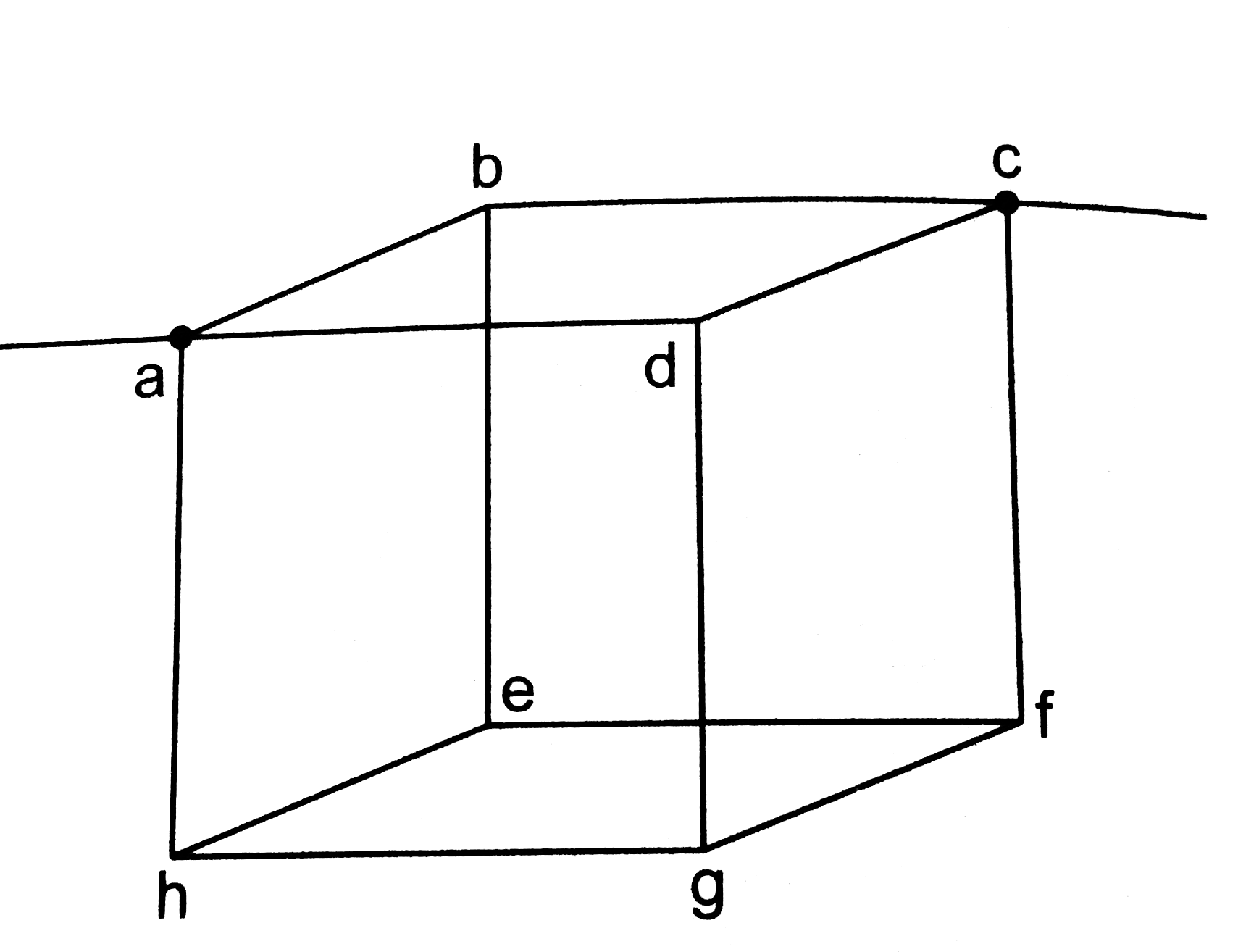 Solution in Tamil
Solution in Tamil
Suppose a potential difference V is applied between the points a and c so that a current I enters at a and the same current leaves at c. The current distribution is shown in figure.ltbygtBy symmetry, the paths ad and ab are equivalent and hence will carry the same current i1.Thepathahwillcarrythesamecurrenti-2i_(1)(using Kirchhoff's junction law).Similarly at junction c, currents coming form dc and bc will be i1each and fron fc will be i−2i1.Kirchhoff's junction law at b and d shows that currents through be and dg will be zero and hence may be ignored for further analysis. Omitting these two wires, the circuit is redrawn in figure.
The wire hef and hgf are joined in parallel and have equivalent resistance(2r)(2r)(2r)+(2r)=rbetween h and f.This is jioned in series with ah and fc giving equivalent resistancer+r+r=3r.This 3r is jioned in parallel with adc (2r)and abc(2r) between a and c,
the equivalent resostance R between a and c is, therefore, given by
1R=13r+12r+12r,
giv∈gR=34r.
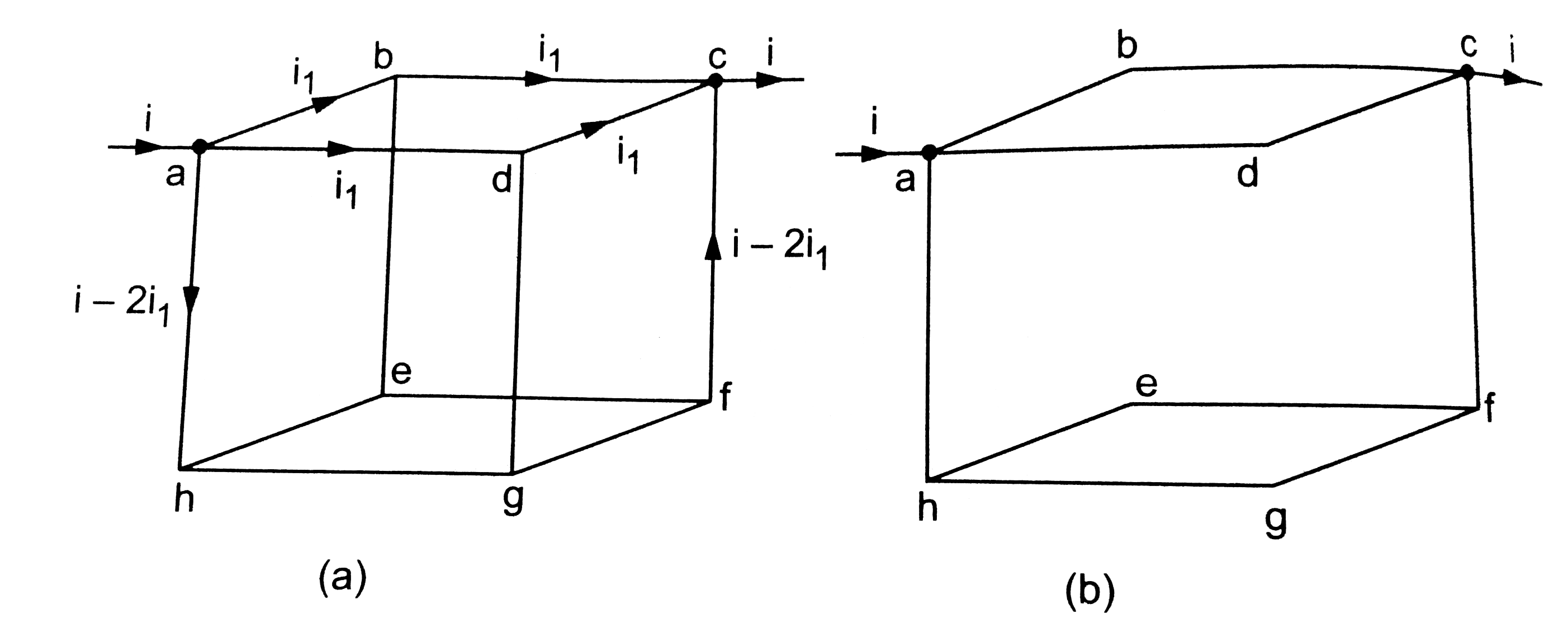
Topper's Solved these Questions
- ELECTRIC CURRENT IN CONDUCTORSBOOK - HC VERMACHAPTER - ELECTRIC CURRENT IN CONDUCTORSEXERCISE - questions for short answer
17 Videos
- ELECTRIC CURRENT IN CONDUCTORSBOOK - HC VERMACHAPTER - ELECTRIC CURRENT IN CONDUCTORSEXERCISE - Objective 1
16 Videos
- ELECTRIC CURRENT IN CONDUCTORSBOOK - HC VERMACHAPTER - ELECTRIC CURRENT IN CONDUCTORSEXERCISE - Exercises
84 Videos
- DISPERSION AND SPECTRABOOK - HC VERMACHAPTER - DISPERSION AND SPECTRAEXERCISE - Exercises
11 Videos
- ELECTRIC CURRENT THROUGH GASESBOOK - HC VERMACHAPTER - ELECTRIC CURRENT THROUGH GASESEXERCISE - Exercise
23 Videos
Similar Questions
Suppose you have three resistor each of value (30Ω).List all the different resistances you can obtian using them.
View SolutionA metallic resistor is connected across a battery.If the number of collisions if the free electrons with the lattice is somehow decreased in the resistor (for example,by cooling it ),the current will
View SolutionThe amount of charge passed in time t through a cross-section of a wire is
Q(t)=At2+Bt+C.
(a)Write the dimensional formulae for A,B and C.
(b) If the numerical values of A,B,and C are 5,3 and 1 respectively in SI units,find the value of the current at t=5 s.
View SolutionA flint glass prism and a crown glass prism are to be combined in such a way that the deviation of the mean ray is zero. The refractive index of flint and crown glasses for the mean ray are 1.620 and 1.518 respectively. If the refracting angle of the flint prism is 6.0∘, what would be the refracting angle of the crown prism ?
View SolutionA discharge tube contains helium at a low pressure. A large potential difference is applied across the tube. Consider a helium atom that has just been ionized due to the detachment of an atomic electron. Find the ratio of the distance travelled by the free electron to that by the positive ion in a short time dt after the ionization.
View SolutionTwelve wire, each having equal resistance r, are joined to form a cube as shown in figure.Find the equivalent resistance between the diagonally opposite points a and f.
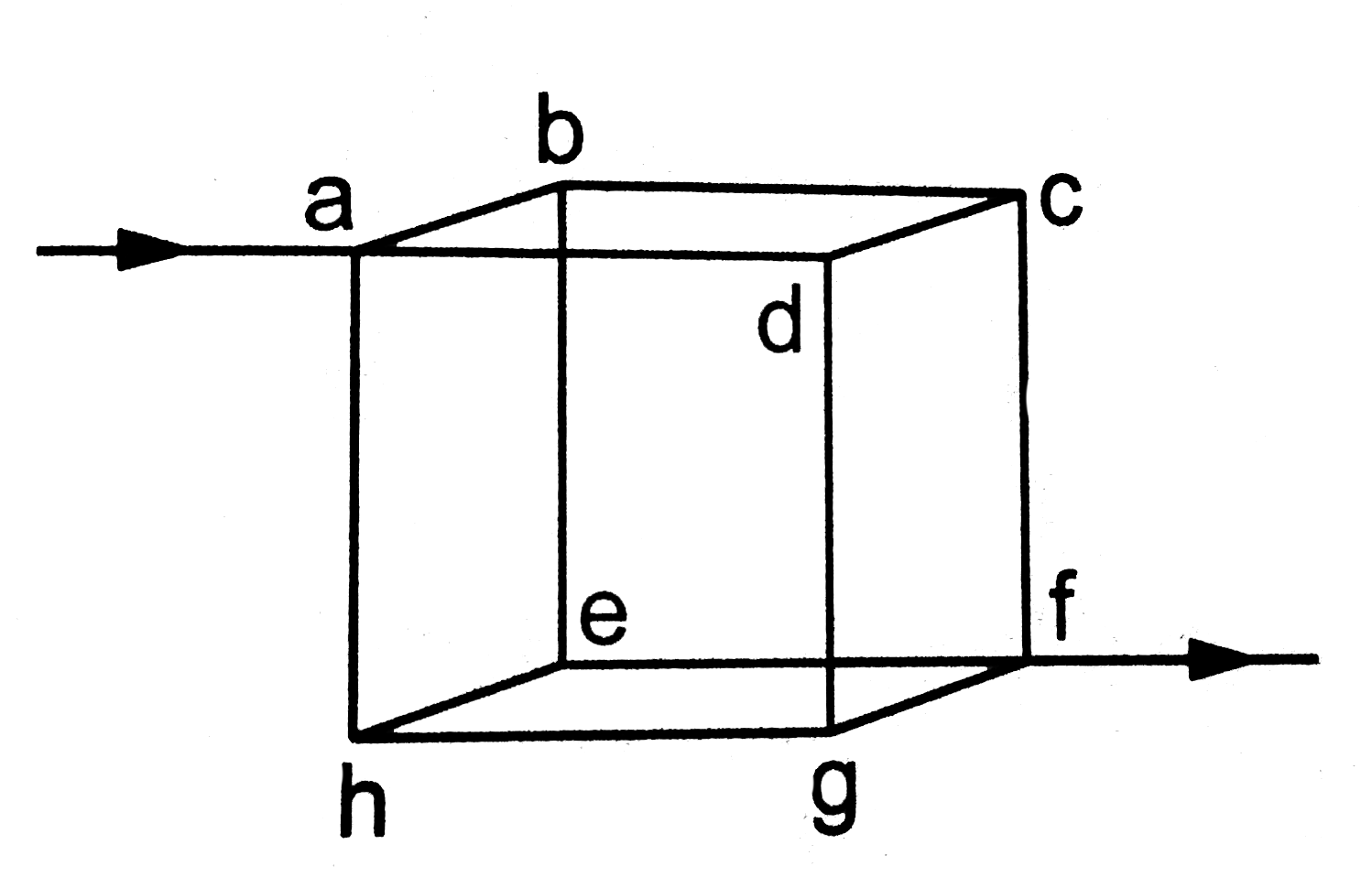
View SolutionTwelve wires of equal length and same cross-section are connected in the form of a cube. If the resistance of each of the wires is R , then the effective resistance between the two diagonal ends would be
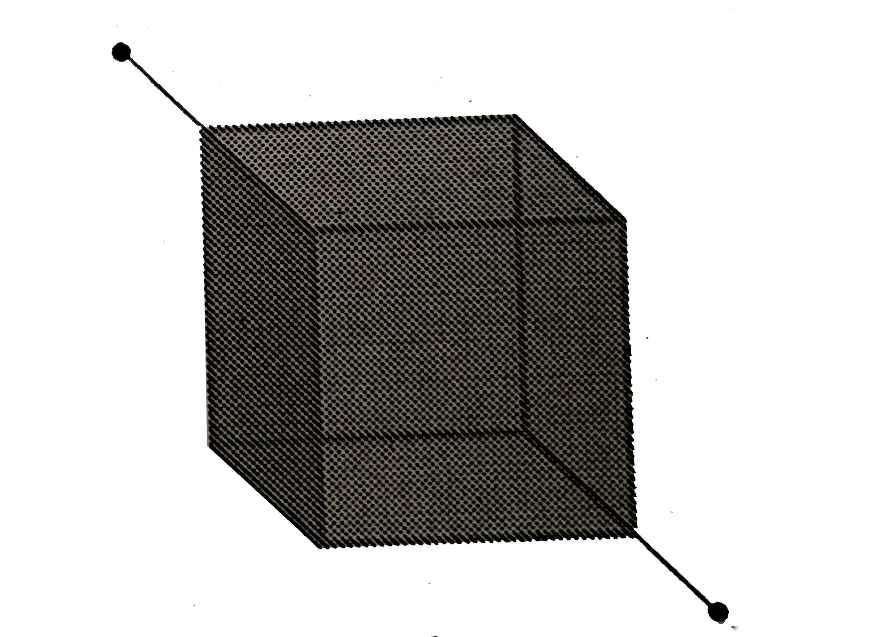
View SolutionTwelve wires, each of resistance 6Ω are connected to form a cube. The effective resistance between two diagonally opposite corners of the cube is
View SolutionTwelve equal wires each of resistance rΩ form a cube. The effective resistance between the corners of the same edge of the cube is
View SolutionTwelve wires of equal length and same cross-section are connected in the form of a cube. If the resistance of each of the wires is R, and the effective resistance between the two diagonal ends is Re, then the ratio RRe is equal to __.
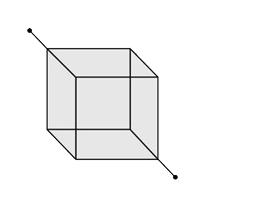
View Solutionबारह समान तार जिनका प्रत्येक का प्रतिरोध r है, जुड़कर एक घनीय परिपथ जाल बनाते है इसके विकर्णतः सम्मुख कोणों के मध्य समतुल्य प्रतिरोध R की गणना करें |
View SolutionTwelve wire, each having equal resistance r, are joined to form a cube as shown in figure.Find the equivalent resistance between the diagonally opposite points a and f.

View SolutionTwelve equal wires , each of resistance r ohm are connected so as to form a skeleton cube. Find the equivalent resistance between the diagonally opposite points 1 and 7.
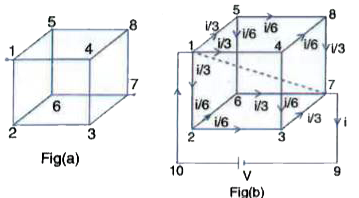
View SolutionTwelve equal wires each of resistance r are joined to form a skeleton cube. Find the equivalent resistance between two corners on the same edge of the cube.
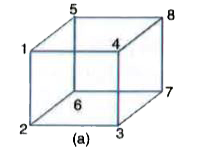
View SolutionTwelve equal wires, each of resistance r ohm are connected so as to form a skeleton cube. Find the equivalent resistance between the diagonally opposite points 1 and 7.
View SolutionTwelve equal wires, each of resistance r, are joined to form a skeleton cube. The current enters at one corner and leaves at the diagonally opposite corner. Find the total resistance between these corners.
View Solution
